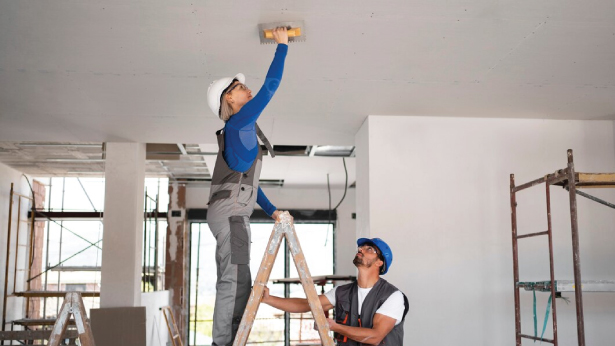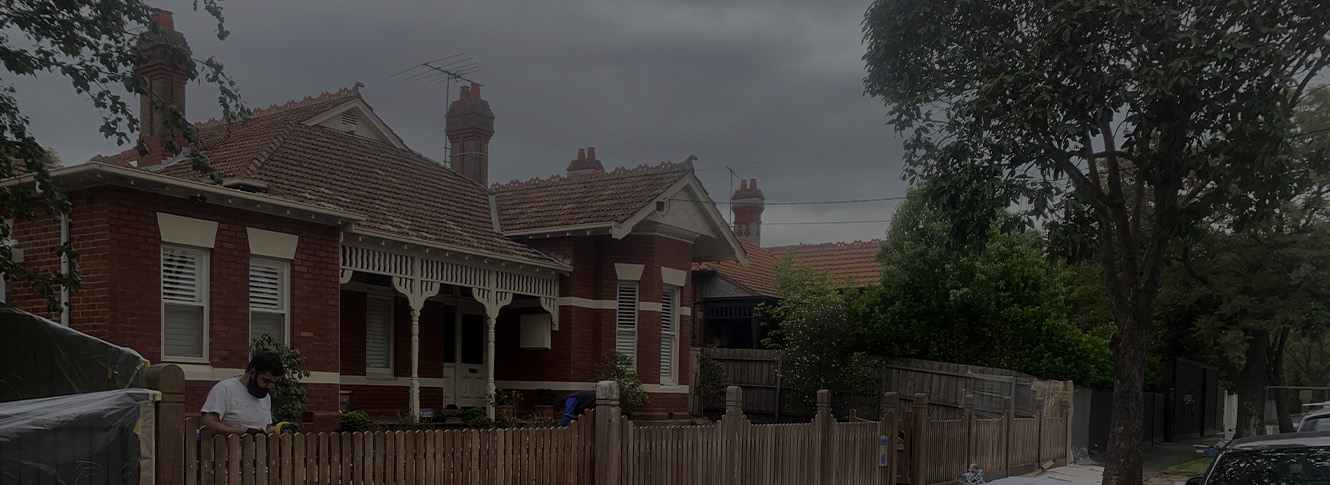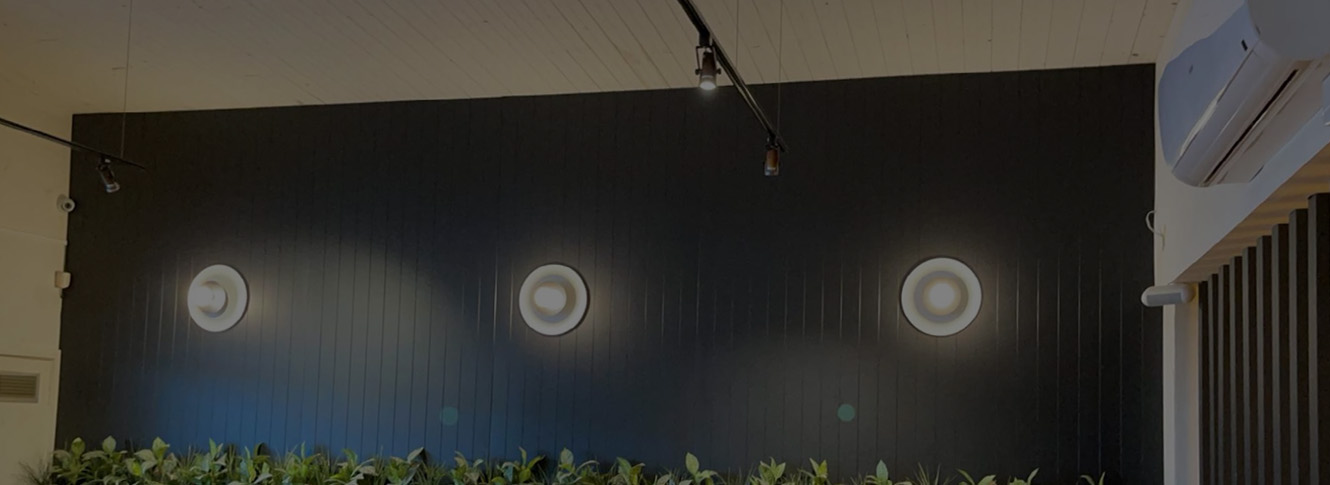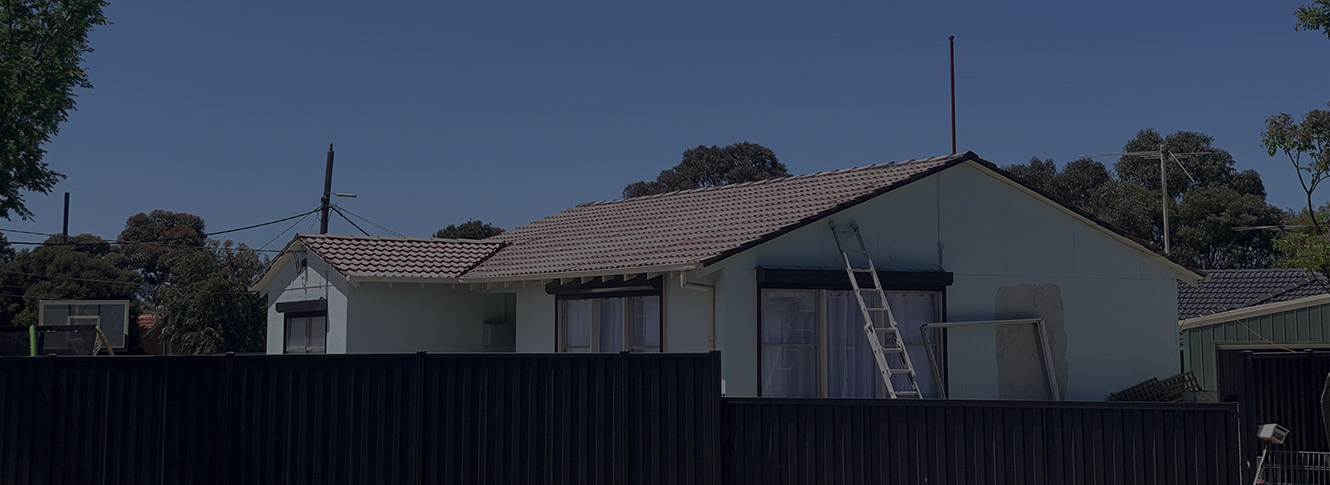How to Repair a Plaster Ceiling
Damaged plaster on ceilings is an eyesore and poses a safety risk as well. Common issues include small cracks, sagging plaster, or water damage, among other things. When you’re dealing with such problems, timely repairs can prevent further deterioration and costly fixes. Understanding how to repair ceiling cracks and patch plaster walls is key to maintaining your home’s structural integrity and aesthetic appeal.
This blog explores the causes of ceiling damage, discusses step-by-step methods to repair a plaster ceiling, and tips for long-lasting results. Let’s get started right away.

Common Causes of Plaster Ceiling Damage
Knowing what causes plaster to crack or deteriorate is important. It makes finding solutions and future preventive measures much easier. Here are some typical reasons for plaster ceiling damage:
Structural Movement
Over time, as houses settle, structural changes cause minor cracks on plastered surfaces.
Water Damage
Leaky roofs or plumbing issues affect the plaster, leading to sagging or soft spots.
Poor Adhesion
Aging plaster or its improper application can cause sections to detach from the ceiling.
Temperature and Humidity Changes
Extreme weather conditions expand and contract the plaster, leading to cracking.
If the damage is extensive, consider professional plaster ceiling restoration to ensure durability and a seamless finish. Smaller areas could be handled as a DIY project. However, for the best results, always hire an expert.
How to Repair Ceiling Cracks
Now that you’re familiar with the causes, let’s talk about how to repair ceiling cracks. Since it poses an immediate safety risk, the best option is to hire a professional for the job. They will fix the problem quickly while meeting all the required standards.
Here’s how the whole thing generally works:
Assessing the Damage
A professional first examines the affected area and identifies the actual problem. This is a very important step in the process.
-
Hairline cracks
are common and often cosmetic, but larger cracks may indicate underlying structural issues.
- If the ceiling is sagging, the plaster needs to be re-secured or removed and restored.
-
Preparing the Area
The next stage is preparation and clearing the area for the actual work.
- Loose plaster around the cracks is removed using a scraper.
- The surface is then cleaned with a damp cloth to remove any dust or debris.
Applying Plaster Filler
Now, a plaster is used on the cracked surface.
- A high-quality plaster patching compound or a mix of plaster and water is applied.
- The crack is filled evenly with a putty knife and smoothened out.
Sanding and Repainting
Once that’s all done, the final touches can take place.
- Once dry, the area is sanded lightly for a smooth finish.
- The ceiling is also repainted using a matching shade of ceiling paint for a seamless look.
How to Patch a Plaster Ceiling
If a section of your ceiling has holes, deep cracks, or sagging plaster, here’s how it can be fixed. An expert will patch the damaged area following these steps:
Removing the Damaged Plaster
Loose or crumbling plaster is carefully scraped off using a paint scraper or putty knife. If the ceiling has sagged, it’s reattached to the joists with screws and plaster washers.
Applying a Base Coat
A bonding agent or primer is then applied to help the new plaster adhere properly. Then, the first coat of plaster is layered and pressed firmly into the patched area.
Finishing Steps
Once the first coat dries, a second coat is applied for a smooth, level surface. After the patch has dried, the surface is sanded and a fresh coat is painted over it.
Plaster Ceiling Repairs: When to Get Expert Help
While minor cracks and small patches can be fixed with DIY methods, major plaster ceiling issues require professional attention. Consider hiring an expert if you notice:
- Large cracks or sagging sections indicate deeper structural issues.
Water-damaged plaster that feels soft, crumbly, or discoloured.
Heritage plaster ceilings that require specialised restoration techniques.
At The Paint Crew, we provide professional plaster ceiling repair services to ensure a smooth, durable finish. Our team uses high-quality materials and advanced techniques to restore your ceiling. You can call us on 1300 803 896 or email us at info@thepaintcrew.com.au and get a quote today!


















